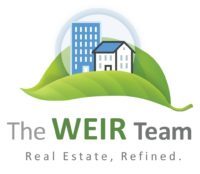TREB RELEASES JUNE MARKET FIGURES AS REPORTED BY GTA REALTORS®
TORONTO, July 4, 2019 – The new President of the Toronto Real Estate Board, Michael Collins,
announced that Greater Toronto Area REALTORS® reported 8,860 sales through TREB’s MLS® System in
June 2019, representing a 10.4 per cent increase compared to June 2018. Over the same time period, total
new listings remained at a similar level for the month of June and active listings at month-end were down
by 5.7 per cent.
Sales and new listings statistics for the first half of 2019 compared to the same period in 2018 painted a
similar story to that of June. Sales were up by 8.5 per cent, while new listings were up by less than one per
cent. This shows that sales accounted for a greater share of listings compared to last year, which means
that competition between buyers increased, resulting in renewed price growth in many segments of the
market.
“As I start my term as President of the Toronto Real Estate Board, I am proud to say that the Greater
Toronto Area continues to grow, in terms of employment, population and overall diversity. As people are
attracted to our region from all around the world, they obviously need a place to live. Over the next year,
as demand for ownership and rental housing continues to grow, my hope is that we will see more
movement from policy makers on two fronts: alleviating the constrained supply of housing and providing
more flexibility around demand-side policies, including the OSFI two percentage point mortgage stress test
and allowable amortization periods on insured mortgages,” said Mr. Collins.
The overall average selling price in June 2019 was $832,703 – up by three per cent compared to the
average of $808,066 in June 2018. Price growth was driven by the higher density market segments,
including semi-detached houses, townhouses and condominium apartments. The MLS® Home Price Index
Composite Benchmark was up by a similar annual rate of 3.6 per cent. For the first half of 2019, the
average selling price was $810,661, representing an increase of 2.4 per cent compared to the first half of
2018.
“Buyers started moving off the sidelines in the spring, as evidenced by strong year-over-year price growth
throughout the second quarter. However, because we saw virtually no change in the number of new
listings, market conditions tightened and price growth picked up, especially for more higher density home
types, which, on average, are less-expensive than traditional detached houses and therefore provide more
affordable housing options under the new OSFI stress test regime,” said Jason Mercer, TREB’s Chief Market
Analyst.
“While some home buyers may have adjusted to the OSFI stress test by looking to more affordable housing
options, this could present an issue over the longer term because we aren’t adding a meaningful amount of
new mid-density housing supply to bridge the gap between condominium apartments and detached
houses. Finding ways to add more mid-density housing types to existing neighbourhoods and new
developments needs to be a key component of municipal, provincial and federal housing plans and policies
moving forward,” said TREB CEO John DiMichele.

